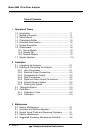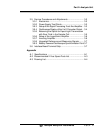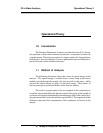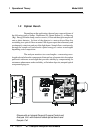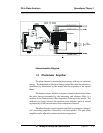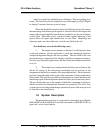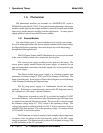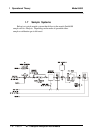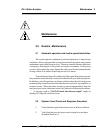
1-6 Part II
1 Operational Theory Model 6600
Teledyne Analytical Instruments
1.6 Photometer
The photometer modules are mounted on a BACKPLATE inside a
NEMA Enclosure (See D-71055). Facing the mounted photometer, the source
module is at the right top, the sample module is externally located in the folded
optics loop, and the detector module is on the right bottom. A source power
supply module is placed near the HG source module.
1.6.1 Source Module
Any one of three types of source modules may be used in your system.
For oil in water applications the Source module contains a HG source within
its ellipsoid reflector containing a lens and clamp to focus the lamp energy
through the folded optical train.
The QI (Quartz-Iodine) and D
2
(Deuterium Arc) sources are mounted
in the source module which also contains the focusing lens.
The source power supply module provides power to the lamps. The
source power supply module houses the power supply, a connector for an
optional temperature controller to heat the sample cell, and an optional span
filter power supply.
The Quartz-Iodine lamp power supply is a switching regulator that
maintains a constant voltage (5 VDC) across the filament of the lamp. The
lamp is incandescent. Its envelope is filled with a halogen to avoid sputtering
of the filament, blackening the lamp envelope.
The D
2
lamp power supply is a combination current and voltage
regulator. It maintains a constant anode current in the D
2
lamp and controls
the voltage across the lamp’s cathode (filament).
When power is turned on, relay K1 is activated and applies 10 VDC
across the filaments. After ionization of the Deuterium vapor, the lamp starts
to conduct from cathode (filament) to anode. This causes K1 to deactivate and
the filament voltage drops to 7 VDC, which is the operating voltage. The
voltage from anode to cathode which was 365 V before ionization, drops to
about 60 VDC after ignition. This is the operating voltage. A constant current
of 350 mADC is the anode current.
The Deuterium arc lamp is employed with samples whose component
of interest does not absorb at the high intensity peaks of the HG source
emission spectrum. The Deuterium arc produces a broadband of energy (200
to 400 nanometer) in the UV spectrum.



